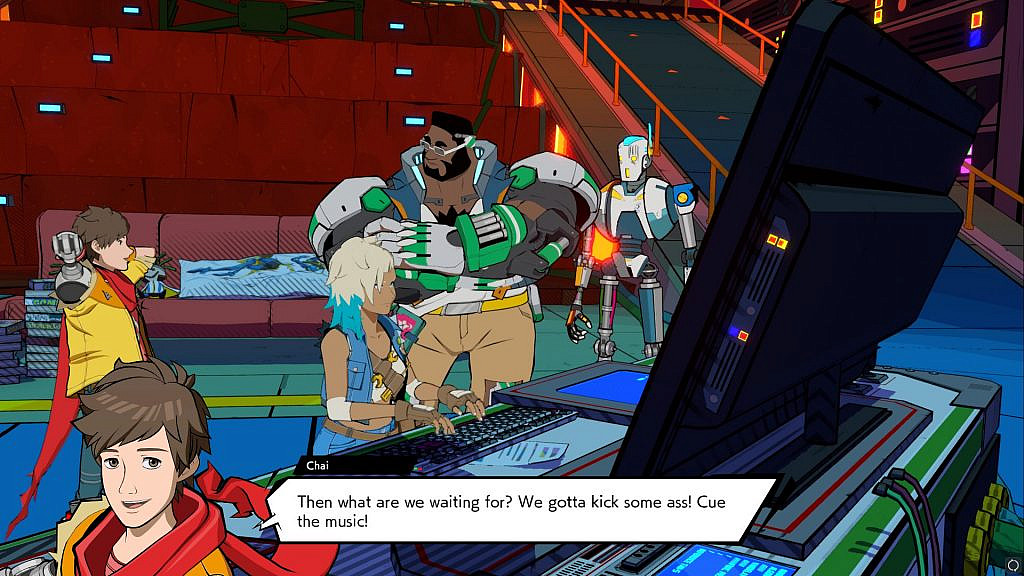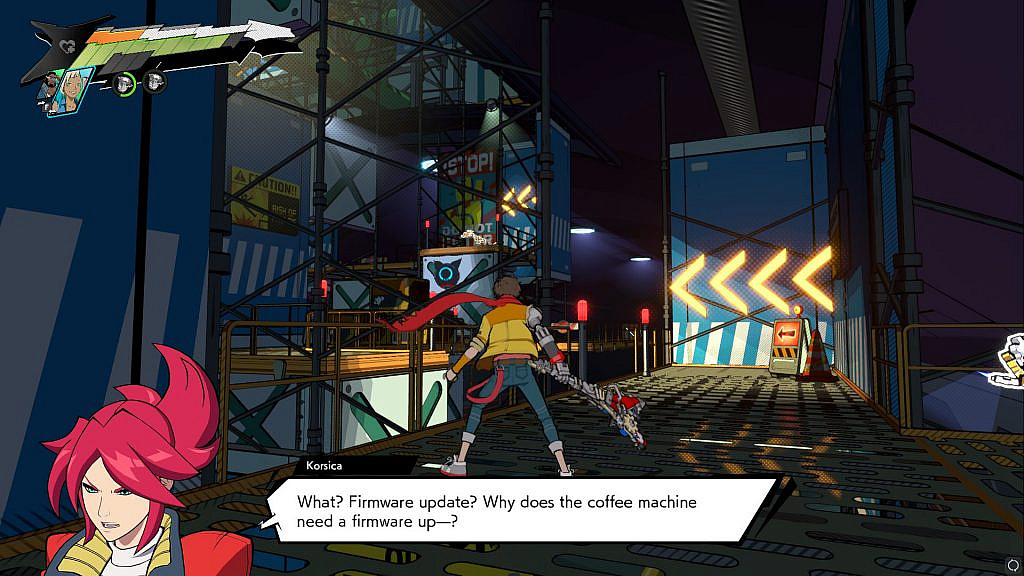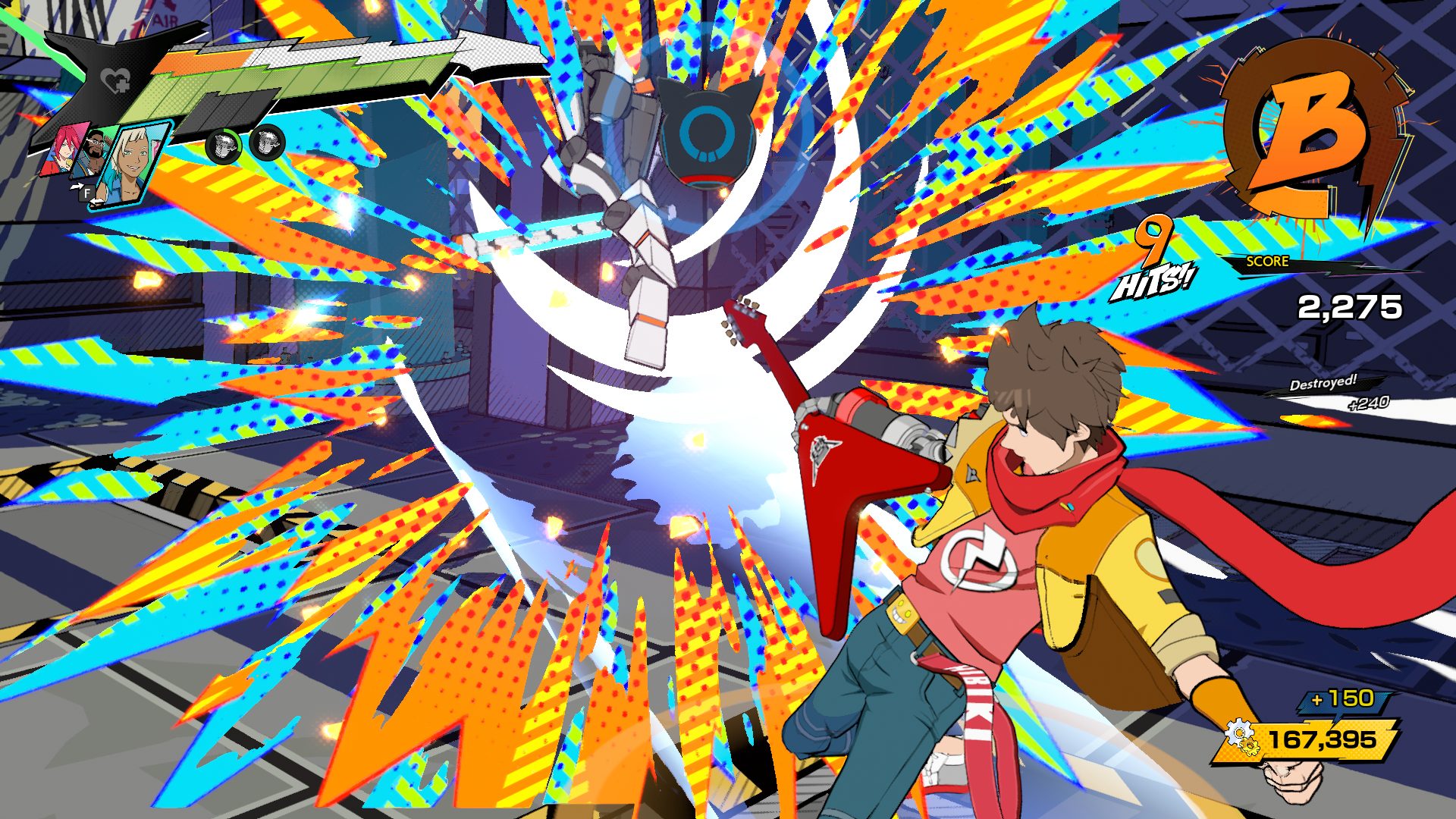From the makers of The Evil Within and Ghostwire: Tokyo, Hi-Fi Rush is a very unexpected surprise. It sticks out like a wrong note in Tango Gameworks’ composition of dark, serious, and creepy games, but still manages to capture hearts with its’ vibrant, fun-loving charm.
The story begins by introducing Chai, a young goofball with a broken arm and a desire to be a rock star. After a robotic arm transplant goes funky at Vandelay, a robotics megacorporation, Chai wakes up with not only a metallic arm, but his trusty MP3 player implanted right in his chest. With the iPod-esque device in his torso, Chai can now see and feel everything around him pulsing to a steady beat. When Vandelay’s shady robot goons come to scrap this walking and talking defect, he arms himself with a makeshift guitar sword in the shape of a Gibson Flying V. The stage is set, it’s showtime!

Combat in Hi-Fi Rush may be simple, but it’s incredibly fun. Like in a regular 3D beat-em-up, you progress through levels fighting batches of enemies. But in Hi-Fi Rush, player and enemy actions are synced to the background music: you fight by timing your attacks, abilities, and dodges on its’ beats. While player actions get performed no matter how off-beat they are, the game rewards a good sense of rhythm by giving extra damage to well-timed attacks. The relatively low depth of the combat keeps it lighthearted, but in tough spots, it can often lead to button-mashing that still works. To counter this, the game throws in new mechanics and concepts at a good pace to keep things fresh and interesting, and the game knows well not to stick to gimmicks. Each fight also gets graded (similar to game series like Bayonetta or Devil May Cry) which serves as a fun challenge to aim for good beat accuracy, completion time, or style points.

What makes this game truly memorable for me is its charming presentation. The whole game is reminiscent of a Saturday morning cartoon with its colorful palette, quirky characters, and general playfulness, but it still doesn’t feel childish or embarrassing. The game’s witty humor and satire on work culture and technology are all surprisingly well-delivered, mature, and amusing, never becoming too nauseating or irritatingly dry. Humor in games is usually a tough sell for me, but Hi-Fi Rush has some of the most effortlessly fun writing I’ve experienced and always manages to bring a smile to my face, one way or another.

One thing where Hi-Fi Rush doesn’t deliver 100 percent for me is ironically its’ own music. Don’t get me wrong here: the soundtrack fits the game perfectly, and it even has spectacular needle drops from the likes of Nine Inch Nails, The Prodigy, and The Black Keys. But more often the game features its’ own original tracks of noisy garage rock and smooth acidy jazz, both of which are… fine. The songs always make me tap my foot when playing, but I can’t recall any melodies or especially great parts from them. To me, they often feel like elevator music in a sense: in the background to make the ride enjoyable but gone from your head once you exit. I do feel most tracks were kept simple by design, so as to guide the player with beat timings rather than distract them with outstanding compositions. But when everything else in the game is already so excellent, things that are simply “okay” just feel more forgettable.
Hi-Fi Rush is one of my highlights of 2023 and perhaps even one of my all-time favorites. It’s a passion project that delivers its punches well on many different aspects. Core gameplay, visuals, music, writing, and even humor are all filled with charm and make the whole experience a sum greater than its parts. It’s stylish, clever, and a low-key yet fresh take on beat-em-up games. Even if you’re not an expert at brawling or rhythm games, I highly recommend giving Hi-Fi Rush a go.
Publisher: Bethesda Softworks
Developer: Tango Gameworks
Platforms: Windows, Xbox Series X/S
Release date: January 25th, 2023
Genre(s): Action, rhythm, beat-em-up, hack-and-slash
PEGI: 12+
Photos: Screenshots from Hi-Fi Rush (Tango Gameworks 2023), taken by the author
